Stockholm School of Economics
Florence in exile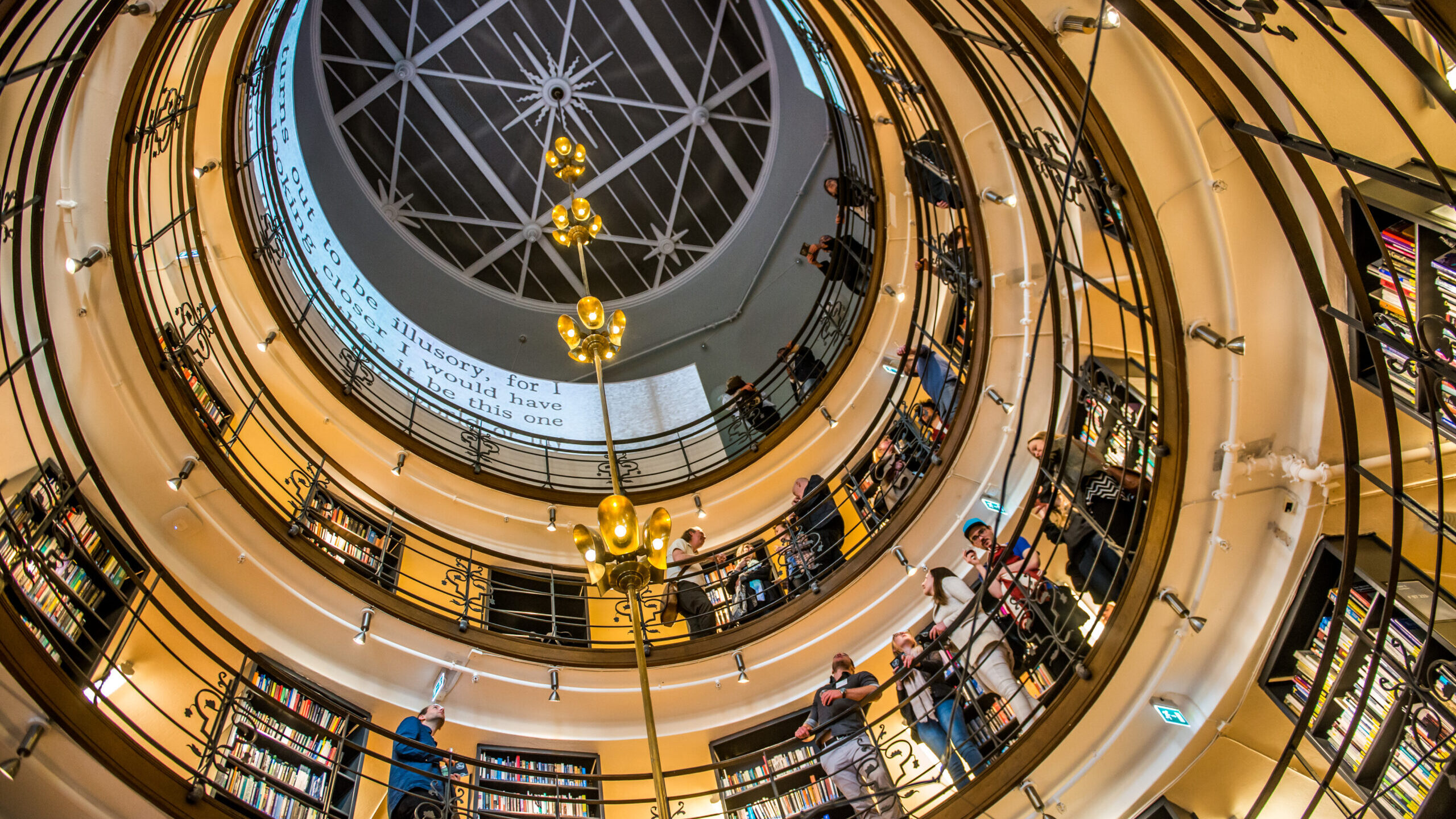
When the Stockholm School of Economics was inaugurated in 1925, it marked a new statement in academic architecture. Behind the drawings stood Ivar Tengbom, one of the most influential Swedish architects of the 20th century. With influences from the Italian Renaissance and a desire to anchor the expression in Swedish tradition, he shaped a building that still today sets the tone for higher education in Sweden.

Photo: Peter Nordahl / IBL Picture Agency
The move from Brunkebergstorg to Sveavägen signaled a new chapter for the young institution – and a great responsibility for Ivar Tengbom. Here, the ambitions of the education would take physical form. The school was meant to inspire confidence, stand firmly in its time, and signal both seriousness and international presence. Tengbom saw architecture as a way to show the way forward. The new building became more than a school. It became a silent, yet clear, expression of faith in the future.
Renaissance inspiration with a Swedish sensibility
The design drew inspiration from Florentine palaces, with a tripartite façade – base, middle, and crown – giving the building rhythm and stability. However, Ivar was no nostalgist. He wanted to interpret, not copy. By carefully selecting materials and proportions, he found balance between the classical and the contemporary. Accordingly, the façade was built in brown-red Helsingborg brick with details in sandstone, limestone, and black granite. Furthermore, the column arcades on the corners and the monumental portal with limestone intarsia create a solemn entrance: sober yet welcoming.
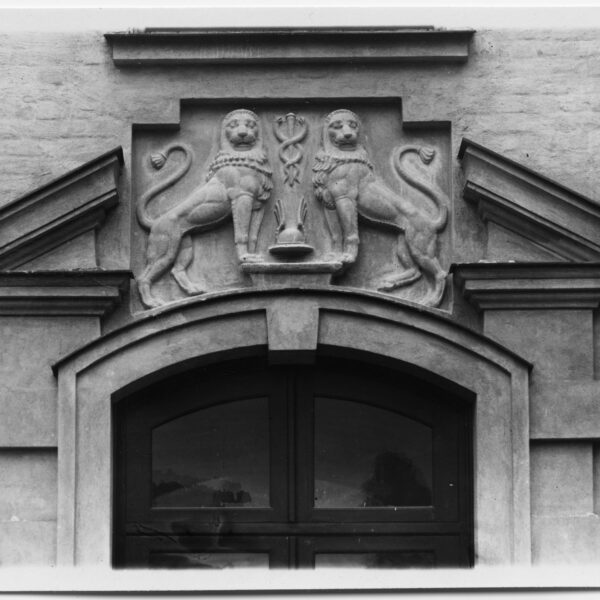
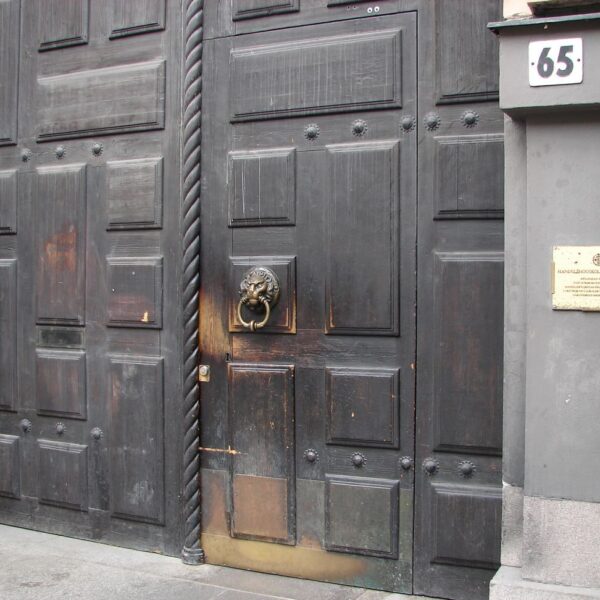

An environment for future leaders
The interior carries the same thought: uniting tradition with function. With its dark wooden panels and tall windows, the auditorium remains one of the highlights of the building. Everything from furniture to lighting was carefully selected to create an environment that fosters concentration and respect for knowledge. Tengbom knew that the environment shapes behavior. Here, he wanted to establish a place that would form not only academics, but also future leaders.
Echoes of Florence – with roots in Swedish granite
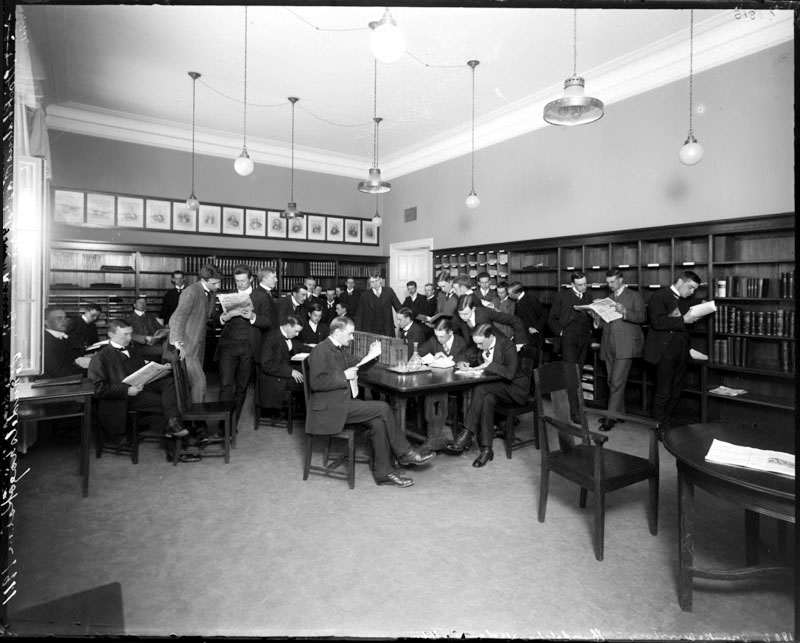
A house that holds both history and future
Perhaps the building’s most striking feature – the bay window and dome facing Observatorielunden – speaks volumes about Tengbom’s sense of spatiality. The cylindrical auditorium, flanked by Doric columns, seats 300 listeners. It is a solemn space where light, acoustics, and materials meet in careful balance. Above the auditorium rises the library’s book tower with four circular floors inside the dome. Custom-designed bookshelves and study spaces with views of the city contribute to an environment where knowledge can grow in multiple directions at once. The spiral staircase linking the floors reinforces the sense of moving through a microcosm of concentrated study.

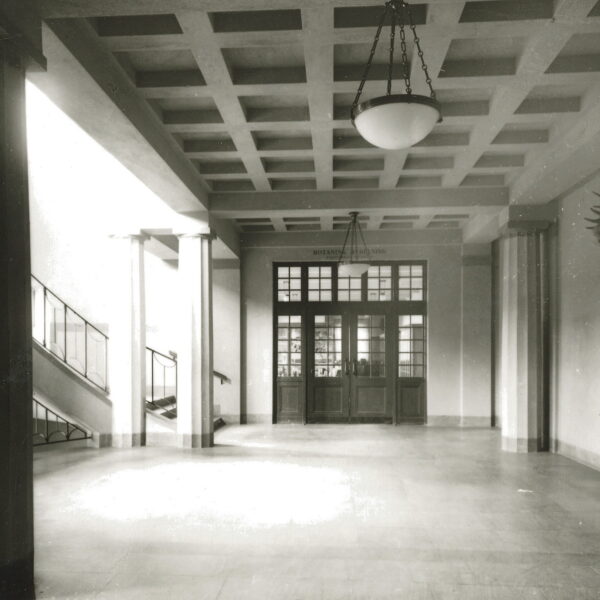
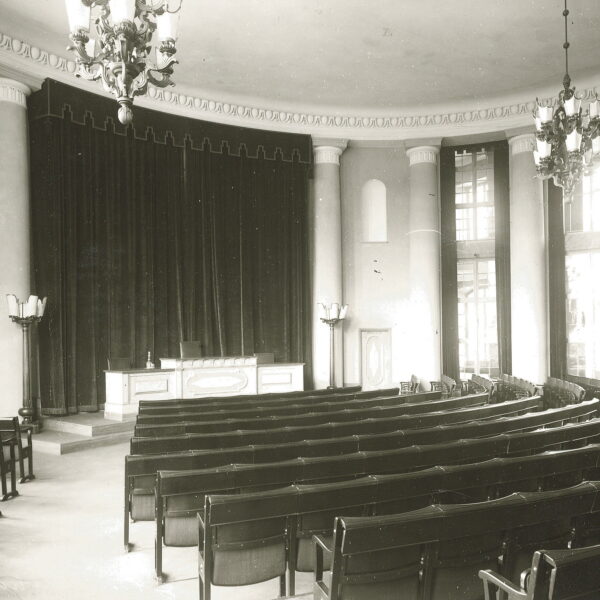
Respectful extensions
Over the years, the building has been developed, always with respect for the original.  In the 1970s, a new southern wing was added by architect Åke Ahlström (1918–2001). A western wing toward the northern part of Saltmätargatan was built in 1976, where the auditorium was joined by modern lecture halls, including the technically advanced KAW. The interesting part? This addition was also designed by Tengbom – now in the form of Tengbom Architects, Sweden’s oldest architectural office and a direct continuation of the practice Ivar Tengbom founded in 1906. That the same office that designed the original building also contributed to its further development almost a century later is a rare but beautiful reflection of what architecture can be: a conversation across generations, built in brick, wood, and thought.
In the 1970s, a new southern wing was added by architect Åke Ahlström (1918–2001). A western wing toward the northern part of Saltmätargatan was built in 1976, where the auditorium was joined by modern lecture halls, including the technically advanced KAW. The interesting part? This addition was also designed by Tengbom – now in the form of Tengbom Architects, Sweden’s oldest architectural office and a direct continuation of the practice Ivar Tengbom founded in 1906. That the same office that designed the original building also contributed to its further development almost a century later is a rare but beautiful reflection of what architecture can be: a conversation across generations, built in brick, wood, and thought.
Between tradition and progress
Although the Stockholm School of Economics is often associated with classicism, Tengbom’s interpretation is far from dogmatic. He worked in a time of change. Functionalism was just around the corner, and in the tension between the tried-and-true and the new, he found the building’s particular strength. Today, the Stockholm School of Economics remains one of Tengbom’s most significant works. A building that did not choose between past and future, but held both in its hand.








